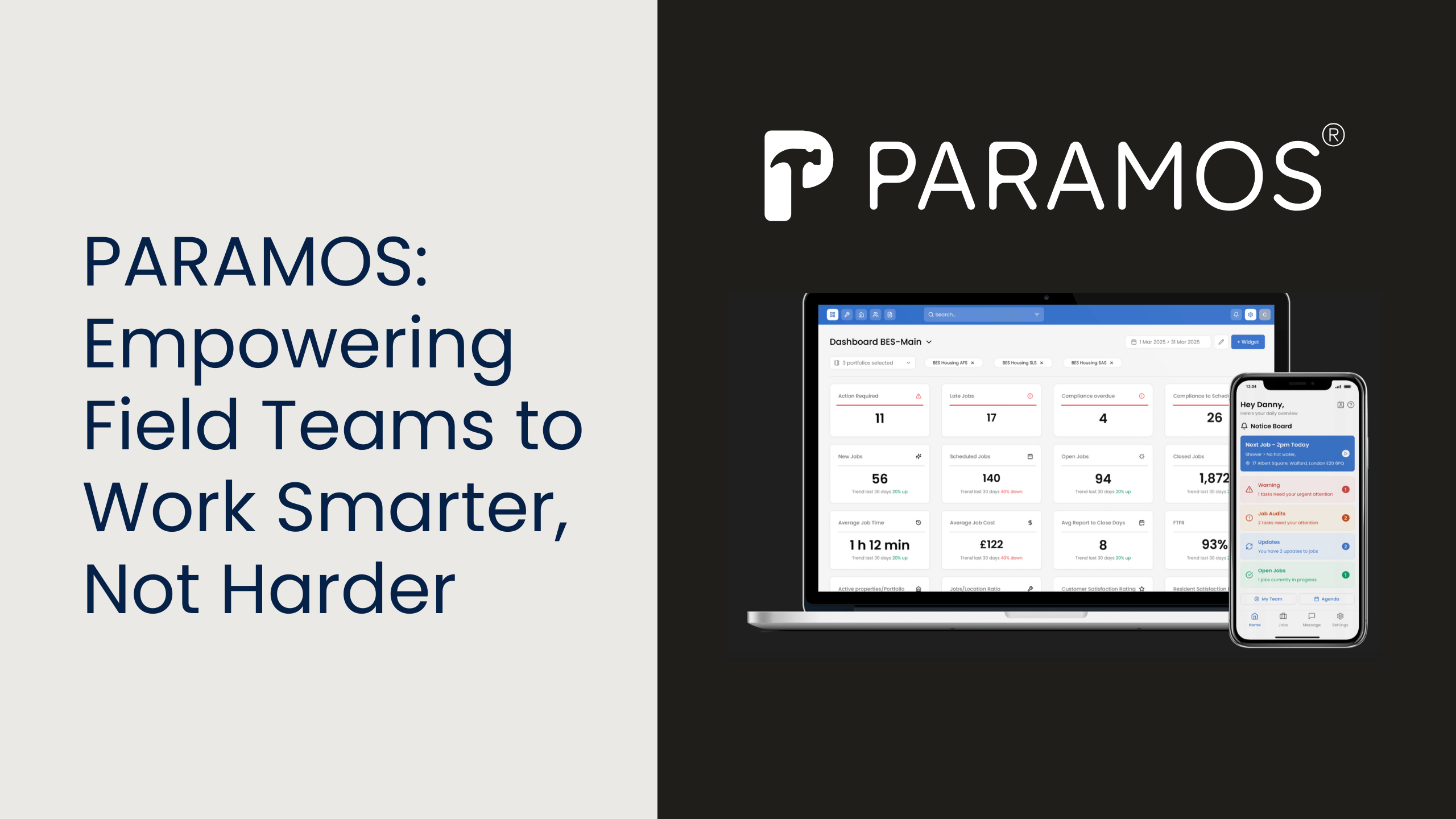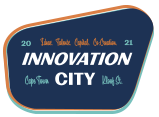
04 Nov PARAMOS: Empowering Field Teams to Work Smarter, Not Harder
In industries like property maintenance and compliance, field teams often find themselves caught in the chaos of too many tools and too little time. PARAMOS, founded in 2024, is on a mission to change that. By connecting existing systems and simplifying workflows, the platform empowers the people doing the actual work — the operatives on the ground — to deliver better results with less friction.
Representing the team, Founder Dean Shepherd and Product and Ops Manager Mari van Lill shared how PARAMOS was born, what problem it’s solving, and why they chose Innovation City as their home base for growth.
Q: What motivated the creation of PARAMOS in 2024? How did you identify the problem in property repairs that the platform aims to solve?
We’ve spent years building software that made life easier for people reporting problems and for the customers approving the work, but the folks actually fixing things were left juggling a messy stack of generic tools that never quite fit. It’s like spending your day bouncing between Meets, Zoom, and Teams. The context switching drains energy and attention, and the work suffers for it. PARAMOS exists to remove that tax on field teams by giving them a platform that fits the way they already operate, so they can focus on solving the issue on site rather than updating the same information in five different places.
Q: PARAMOS is described as an AI-assisted B2B platform that connects existing systems rather than replacing them. Could you walk us through how it works: who it’s for, what value it creates in practice?
Our philosophy is simple: we don’t rip and replace your systems, we replace bad workflows. Keep the tools you’re contractually tied to. PARAMOS connects them into a single, coherent window so managers and operatives see the right context at the right time, without retraining an entire workforce or bending your process to suit a generic product. The outcome is deeper insights, cleaner reporting, fewer clicks, and a transition that feels light because teams get to keep working the way they know works, only faster and with better outcomes.
Q: How does AI assist field teams in maintenance and compliance? Are there predictive analytics, automation rules, or communication enhancements involved?
We want AI to feel like the best teammate you’ve ever had; the one who quietly prepares you before you walk through the door. When an operative receives a job, PARAMOS provides a short, actionable brief: who visited last, what was fixed, what remains outstanding, and quick links into the service history. Automation rules take care of repetitive coordination, turning an hour of overhead into minutes.
The AI race has just begun, and there is no finish line in sight. Today, it is capable of handling real tasks that once required extensive coordination, repetitive actions, or constant context switching. PARAMOS is not about replacing people; rather, we aim to rewire workflows so that humans can concentrate on what truly requires judgment, empathy, or creativity.
Q: You completed a pre-seed round in August 2025 (US$ 271.6K). What phase are you currently in? Are you piloting with early adopters or planning region-specific trial runs?
We closed our pre-seed in August, and we’re moving into a phase that’s about shaping with early design partners. In parallel, we’re building rich profiles for 900+ target customers so we can run thoughtful, strategic pilots with teams that stand to benefit most. The aim is not a splashy demo; it’s a production-worthy vertical slice that proves the day-to-day value in real workflows.
Q: Why did you choose to act as a connective layer rather than a full operational replacement? What benefits does that bring to clients managing legacy systems?
Plenty of organisations are tied to existing tools like Totalmobile Ltd, Simpro Software, and Joblogic Service Management Software, and that’s okay. PARAMOS is designed for that reality. Think of it like a unified communications window that sits across the stack, similar to how Front wraps individual and group email, messaging, voice, and social channels. This allows people to stop switching tools to stitch context together and instead make decisions from a single place that reflects what’s actually happening on the ground. We’re working closely with integration partners who help us knit together the myriad of housing management systems used by our customers’ customers; the housing associations and local authorities, so that all maintenance companies can deliver a seamless service without being held back by fragmented data across incompatible platforms.
Q: Which organisations are you targeting? What kinds of management teams, maintenance needs, or field workflows make PARAMOS a strategic fit?
Our sweet spot in the industry is what is known as “tier 2” organisations: not the giants with endless bespoke systems, not the smallest teams where one spreadsheet still cuts it, but the top end of the mid-market where coordination is complex, volumes are meaningful, and the cost of generic tools is felt every single day. We’re leaning on deep industry relationships to reach these teams faster, because doors at this level open with trust and proof, not just a logo and a pitch deck.
Q: What has been the most surprising difficulty in developing or positioning your platform? Any pivots or product insights so far?
It’s early, and one of our advantages is a team that’s worked together before. That trust compounds. The hard challenge we’re preparing for is data migration and mapping from existing systems while keeping day-to-day operations humming. The signal so far is encouraging: when the mundane gets automated and the right metrics are visible, teams get time back and momentum picks up, because if you can’t see it, you can’t measure it, and if you can’t measure it, you can’t improve it.
Q: What drew you to join Innovation City? What kind of ecosystem support, collaboration, or mentorship are you looking forward to here?
We chose Innovation City because the energy is real; it’s not just a place to sit with Wi-Fi, it’s a community that actually talks, shares, and builds. We’re here to meet people we wouldn’t have met otherwise, to learn faster by being around doers, and to contribute back as we figure out what works and what doesn’t when building a large, complex enterprise product suite.
Q: How do you see PARAMOS evolving in the next 12–18 months? Are there planned features, regional expansions, or new integration partners on the roadmap?
We want to keep the team small. We’re setting the bar where it forces good product decisions: serve 10,000+ people with a team of 10, to reach US$1m USD ARR without trading simplicity for scale. Doing this well means building a platform that is self-serve by default, automates the routine by design, and leans on AI to compress time, reduce coordination tax, and make every person dramatically more effective than headcount alone would suggest.
As PARAMOS continues to refine how field operations connect, communicate, and deliver, their focus remains clear: empower the people doing the real work with tools that respect their time, experience, and craft. By blending integration, AI, and empathy for the end user, they’re proving that true innovation doesn’t have to disrup; it can simply make work feel human again.



